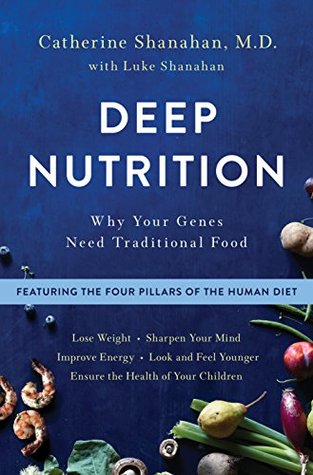More on this book
Community
Kindle Notes & Highlights
Read between
October 9 - November 23, 2022
If you’re running, focus on really filling your lungs. If going up the stairs at work, focus on working the calves for one flight, then try to engage the butt muscles the next.
A good walk, as with any exercise, works out more than your legs, and you get a better workout if you are conscious of your body’s balanced involvement in contra-body action. Opposing motions across the fulcrum of your hips and spine allow you to take advantage of a physiologic “spring” built into your muscles, which cardiologists first recognized as the means by which heart failure patients survive. It’s called the Starling effect.
Aerobic exercise releases endorphins—chemicals your body makes that activate the reward centers of your brain.
Exercise also cleans the bloodstream of a chemical that makes us feel bad, something called tumor necrosis factor (TNF).
How much of this kind of intense exercise do you need to do any good? Less than you might think: Try eight minutes a week!
nutrients in bone stocks switch the genes for collagen manufacture to “on.” This effect is magnified by vitamins A, D, E, and C, and a few common minerals.
Collagens are a family of extra-cellular proteins that give skin its ability to move, stretch, and rebound into shape.
All collagens carry special molecules called glycosaminoglycans (which you might recall from the bone stock section in Chapter 10) attached like bangles on a necklace to the triple helix backbone.
If any one of the thousands of steps involved in making collagen goes haywire—which is likely to happen if your diet was poor during critical growth periods (meaning your diet was low in nutrient-rich foods and high in sugar and vegetable oils)—the integrity of the finished product is compromised and may break down prematurely.
One of the best ways to help collagen heal is, not surprisingly, to eat some. Eating collagen-rich organs (like tripe and tendon) or using bone broths in soups, stews, and sauces floods your bloodstream with glycosaminoglycans, which head directly to the parts of the body that need collagen most.
In my view, a complete strategy for preventing cancer-causing UV-induced DNA and wrinkle-promoting collagen damage includes more than just slopping on sunscreen and presuming you’ve done all you can.
I waded into my new nutritional life by taking the simple step of cutting back on sugar while including more natural fats from foods I already ate, such as eggs, nuts, cream, and cheese. With more butter and delicious homemade dressings, vegetables tasted better, so I ate larger portions, making sure, when possible, that they were fresh instead of frozen. We went to farmers markets more often, and visited the local grocery stores on the days the fresh greens would be delivered.
The people who experience long-term success are able to accomplish these three things: cut down on carbs; swap out toxic fats for healthy ones; and add back missing nutrients.
DAILY HABITS Drink a minimum of 64 ounces of water daily. Instead of soda, drink ice-cold sparkling water with a lemon wedge, herbal tea, or kombucha. For best results, do not snack. Take any supplements with meals. Consider sleep and movement as priorities. Plan your meals using the shopping and planning templates.
The longer I’ve practiced, the more I’ve become convinced that there’s just no such thing as a healthy snack. Snacking habits are a gateway to making poor food choices.
When we eat too much, our kidneys have to convert the unusable protein into either sugar or fat, which can increase the risk of a joint disease called gout.
What I recommend for everyone: Vitamin D 2-4000 IU. I recommend 4,000 international units daily unless you get a lot of sun, in which case 2,000 IU is enough. Magnesium oxide, 250 milligrams. Zinc gluconate, 15 milligrams. By the way, zinc deficiencies have been shown to negatively impact appetite, so if you’re dealing with picky eaters, supplementing may help. A standard multivitamin with 100 percent of the RDA of vitamins (Mason One-A-Day is the only brand currently nationally available that meets this criteria).
What I recommend for people who don’t eat red meat or liver: Desiccated liver pills What I recommend for people who don’t do dairy or bone-in fish or frequent bone stock: Calcium citrate, 250-milligram tablets, twice per day, divided at different meals. I don’t recommend coral calcium, as it’s not a sustainable source.
If you can’t get grass-fed dairy fat (from cheese, butter, or cream, for example) then I also recommend: Vitamin K2, 1.5 milligrams per day. If you can’t find one that small, then do the math and figure out how often to take it for an equivalent daily dose. (It’s fat soluble, and your body can store fat-soluble vitamins more efficiently than water soluble vitamins.) Omega-3. My preferred method of omega-3 supplementation is with flax seeds that you grind fresh before using. You can stir 1–2 tablespoons into hot water and drink like a tea, or plop on top of your yogurt, or anywhere else
...more
What I recommend for vegetarians: Iron, 325 milligrams every other day For vegans, non-dairy consumers, and for vegetarians, add Iodine, from dulse seaweed, one ounce per week
I’m too busy to make major changes. What are some simple things I can do instead of adapting the program wholesale that will still enable me to feel improvements? Here are five ways to get started: 1. Eat a big colorful salad four days per week with a non–vegetable oil dressing. There should be four cups total salad volume, including a minimum of four kinds of vegetables. Fresh salads with a variety of vegetables are particularly important if you’re not ready to go “deep” into Deep Nutrition. Because vegetable oil–free salad dressings are hard to find, you will need to make your own. But it
...more
This highlight has been truncated due to consecutive passage length restrictions.


